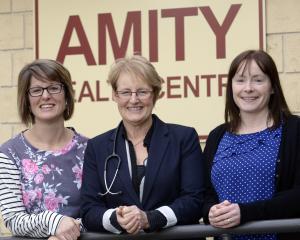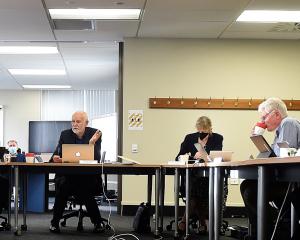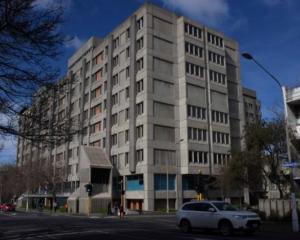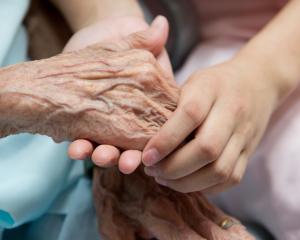Consumers want safe, quality health care.
Within publicly-funded health services we expect to receive best practice evidence-based treatments and we want equitable access to them.
What's the fuss about suggesting public/private cancer care top-ups for unfunded treatments being delivered in public hospitals, especially when there are no private-provider options in town? This question raises many issues relevant to services locally and nationally and not just in relation to cancer care.
Let's examine some underlying assumptions.
Other treatment options - called "top-up treatments" in the Otago/Southland DHBs' discussion document, "Bridging the Gap: A partnership between patients, doctors and DHBs to enhance access to unfunded cancer treatments" - include new or novel treatments or innovations.
That is, although their use may be supported by clinicians in New Zealand and/or internationally, the treatment may not be broadly supported by a rigorous evidence basis.
Cancer may be a leading cause of death in New Zealand but it does not immediately or always follow that enabling patients to access unfunded treatment options through private contributory payments will increase survival rates and/or reduce the overall cancer death rate.
Patients want to access the most up-to-date treatment that gives them the best chance of survival.
The claim that "the availability of new medicines is unlikely to improve for patients in the foreseeable future" needs some qualification around the implied promise these will necessarily produce better long-term outcomes.
In fact the scenarios of "top-up" treatments in the DHBs' background consultation document tell a different story.
When a treatment "may also be slightly more effective . . . although this is not entirely clear", or a regimen "probably improves a patient's life expectancy" Pharmac is right to refuse to fund it.
Just because many of the treatments are new, and may well be as eagerly applied internationally, it does not necessarily mean "international best practice" is robust.
Who will bear the risks for any adverse outcomes associated with treatments that are outside the publicly-funded schedule if they were provided within public hospitals? We know many clinicians are early adopters of new medicines.
It is understandable they want to do the best for their patients' care.
What is not so clearly measurable is how and what information is communicated to patients about the efficacy of new drugs or any associated risks or uncertainties, nor of the degree to which patients are pressured to undertake new or unfunded treatment.
The language used in the consultation document of "top-up treatment" already normalises the [routine] treatment offer and risks interpretation it is just as good as, or probably better than, that offered through publicly-funded means but just hasn't got on to the schedule yet.
If the evidence basis for treatments has changed, then steps should be taken to ensure that when clinical opinion supports a review of treatment regimes for consideration for public funding this process is advanced in a timely and systematic manner.
At the heart of the proposal the question is raised: How can patients access their entitlement to treatment that is publicly funded, and access additional treatment options (should they choose to do so) in a seamless care package?
The discussion assumes everyone wants unfunded top-up treatments - what are patients being told?Over-selling the benefits of many cancer drugs is commonplace, as witness the Herceptin hype.
To suggest clinicians are obligated to advise patients of treatments that they cannot receive because of absence of infrastructure rather than lack of efficacy causes significant distress for both patients and doctors and is misleading and unhelpful.
In the decision for what gets publicly funded, utility and QALY (quality adjusted life year) assessments for cancer treatments must also be weighed against the same measures for other conditions.
For any disease state there will always be some unfunded treatment options that clinicians will be responsible for informing patients about, and for patients to consider whether they wish to access them by private means.
A proposal was briefly sketched for how extra unfunded treatment might be provided in a private-bed arrangement within the public hospital and with separate Entity accountability processes.
The public really needed a better picture of the details before being swept away on a sympathy vote for cancer sufferers.
It is unclear what this proposed Entity entails and how it would function and be governed.
What would be its set-up and ongoing operational costs?
What would its contribution be to DHB overheads?
How would these be recouped from patients over and above the cost of the top-up treatment?
Claims the DHB would be "insulated against spiralling costs associated with new avenues of treatment delivery" have not been substantiated.
Nor do such claims provide an assurance patients will be protected against unfair or excessive costs for access to unfunded drugs.
It is highly likely high-price regimes for their unfunded drugs could be perpetuated.
Further, there is nothing to prevent the DHB adding its own profit margin when these costs are passed on to patients.
Yet the DHBs are boldly suggesting a pilot of this proposed model "designed around one regime" and then, if successful, additional treatments can be added.
What treatments and for what conditions are envisaged? How far might Topsy grow? A picture was presented suggesting South Island cancer patients are not being offered appropriate standard treatment.
If true, this needs to be addressed.
However, the fact that "In the South Island access to non-Pharmac funded novel therapies is virtually non-existent, as there is presently no provision for non-government funded chemotherapy" has significance only for patients seeking options beyond standard therapy.
There is no obligation for the Government or the private sector to ensure there is equitable access for private-sector services.
That is something consumers all live with, in regard to treatment options for all conditions.
Equally contestable is the assertion, "DHBs need to show leadership and innovation in identifying fair and responsible ways to allow patients to self-fund aspects of treatment for which public health funding is not yet available."
DHBs do not, and should not, have responsibility to ensure all possible self-funded treatments are available.
Furthermore, some currently unfunded treatments (whether new or otherwise) may never become publicly funded.
The public system should not make any "routine offer for treatment" outside what it is funded for.
We can only conclude that the Otago/Southland DHBs as the "pivotal stakeholders", in supporting this discussion document, have an eye to the potential as a revenue-generating opportunity.
Yes to clinician-led care, but not into unknown territory of uncertain and/or over-promised outcomes within the public system.
If this cancer treatment proposal is allowed to go through under the guise of public/private partnerships, which will be the next lobby group advocating to tinker with access through the public system to unfunded treatments?
Barbara Holland and Barbara Robson are co-conveners of the Federation of Women's Health Councils.












